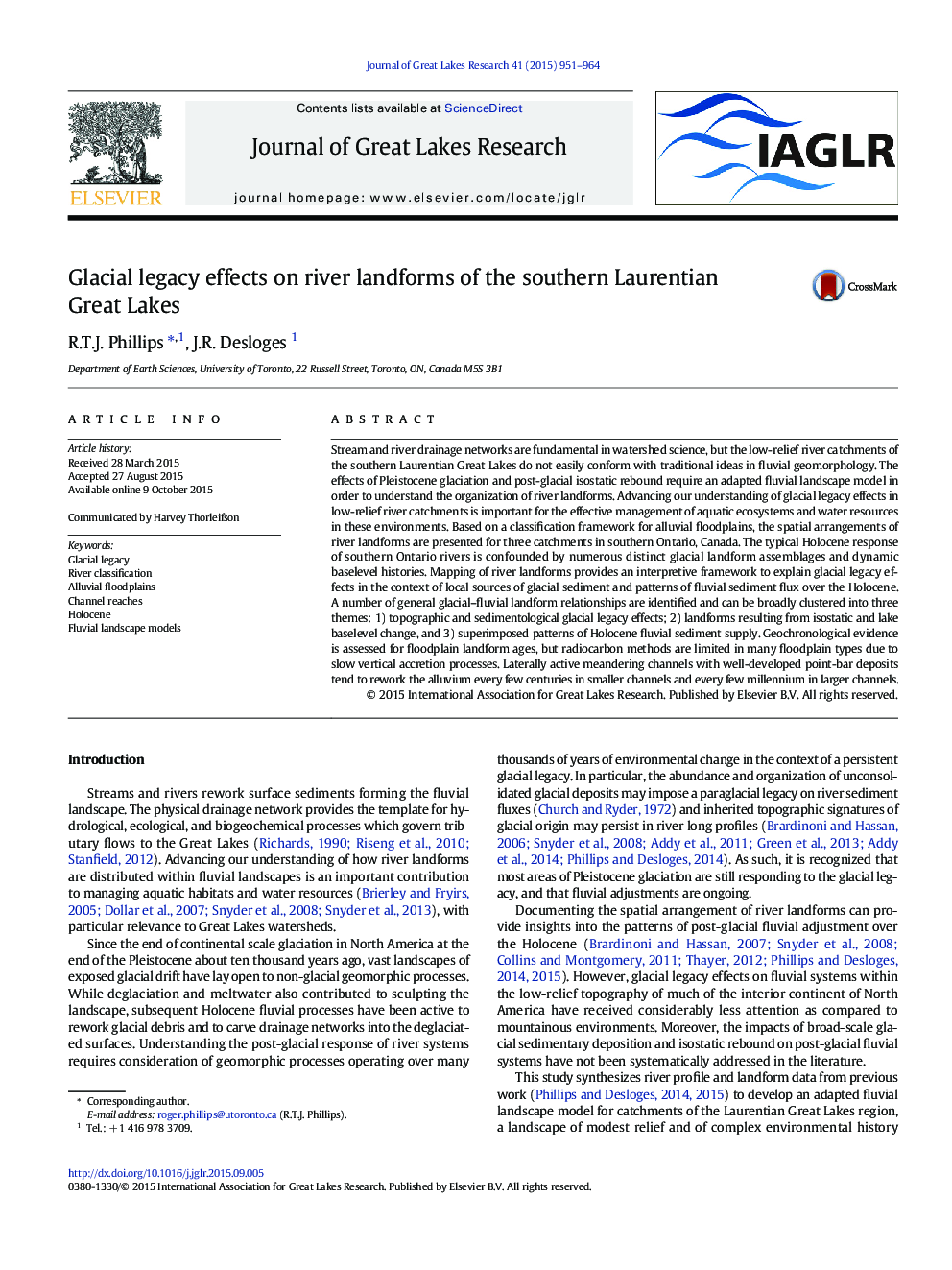| Article ID | Journal | Published Year | Pages | File Type |
|---|---|---|---|---|
| 6304828 | Journal of Great Lakes Research | 2015 | 14 Pages |
Abstract
Stream and river drainage networks are fundamental in watershed science, but the low-relief river catchments of the southern Laurentian Great Lakes do not easily conform with traditional ideas in fluvial geomorphology. The effects of Pleistocene glaciation and post-glacial isostatic rebound require an adapted fluvial landscape model in order to understand the organization of river landforms. Advancing our understanding of glacial legacy effects in low-relief river catchments is important for the effective management of aquatic ecosystems and water resources in these environments. Based on a classification framework for alluvial floodplains, the spatial arrangements of river landforms are presented for three catchments in southern Ontario, Canada. The typical Holocene response of southern Ontario rivers is confounded by numerous distinct glacial landform assemblages and dynamic baselevel histories. Mapping of river landforms provides an interpretive framework to explain glacial legacy effects in the context of local sources of glacial sediment and patterns of fluvial sediment flux over the Holocene. A number of general glacial-fluvial landform relationships are identified and can be broadly clustered into three themes: 1) topographic and sedimentological glacial legacy effects; 2) landforms resulting from isostatic and lake baselevel change, and 3) superimposed patterns of Holocene fluvial sediment supply. Geochronological evidence is assessed for floodplain landform ages, but radiocarbon methods are limited in many floodplain types due to slow vertical accretion processes. Laterally active meandering channels with well-developed point-bar deposits tend to rework the alluvium every few centuries in smaller channels and every few millennium in larger channels.
Keywords
Related Topics
Physical Sciences and Engineering
Earth and Planetary Sciences
Earth and Planetary Sciences (General)
Authors
R.T.J. Phillips, J.R. Desloges,
